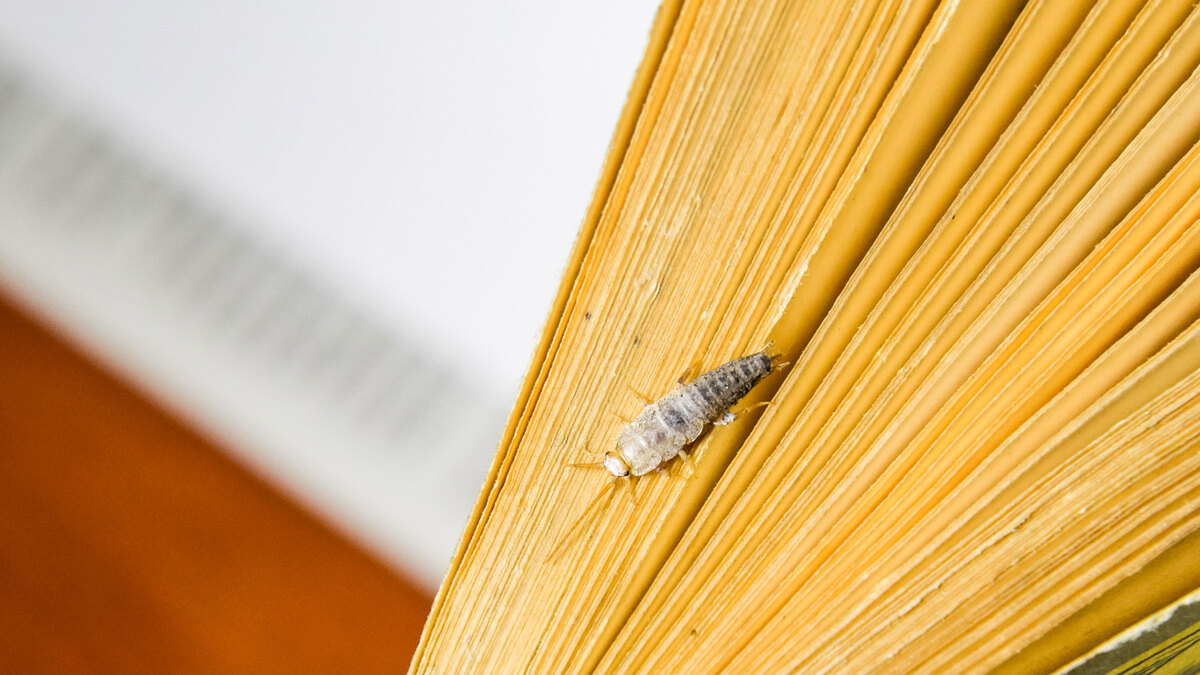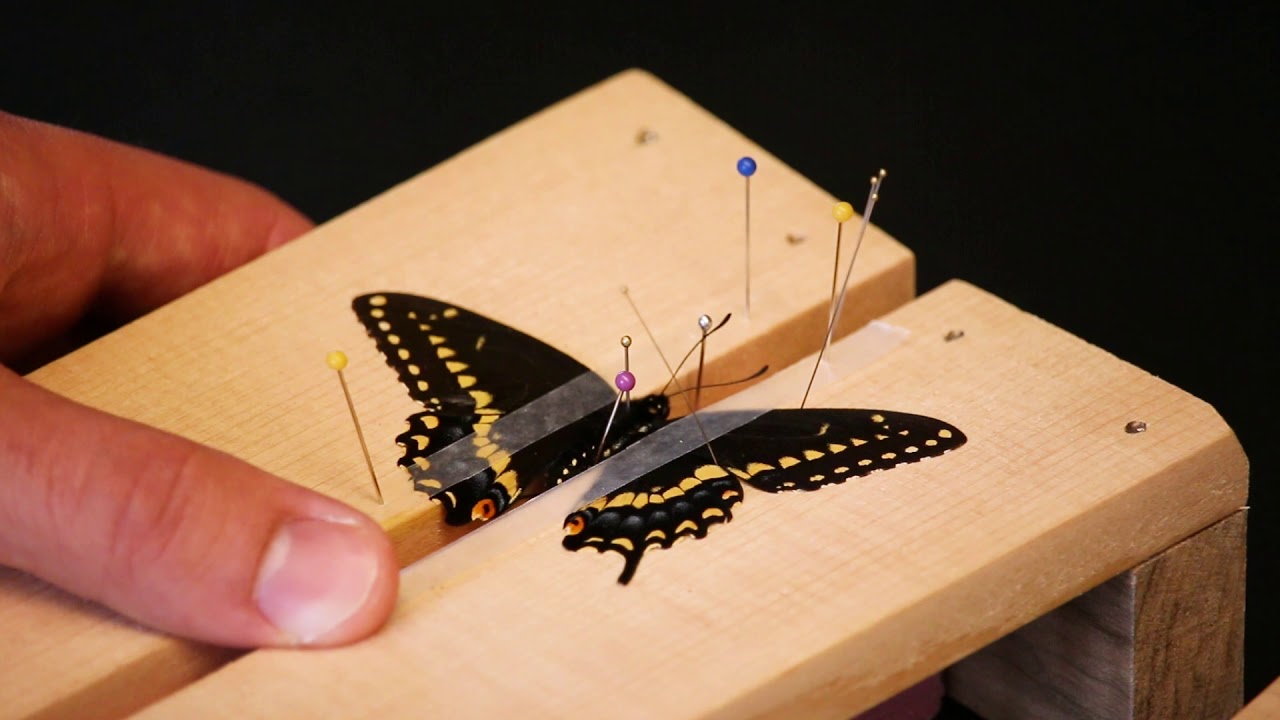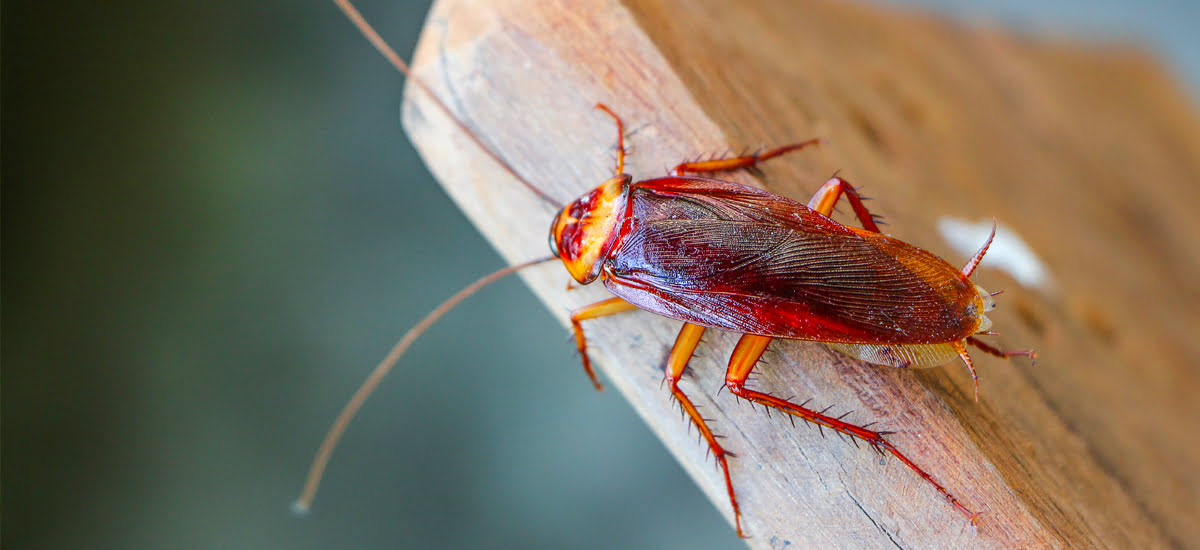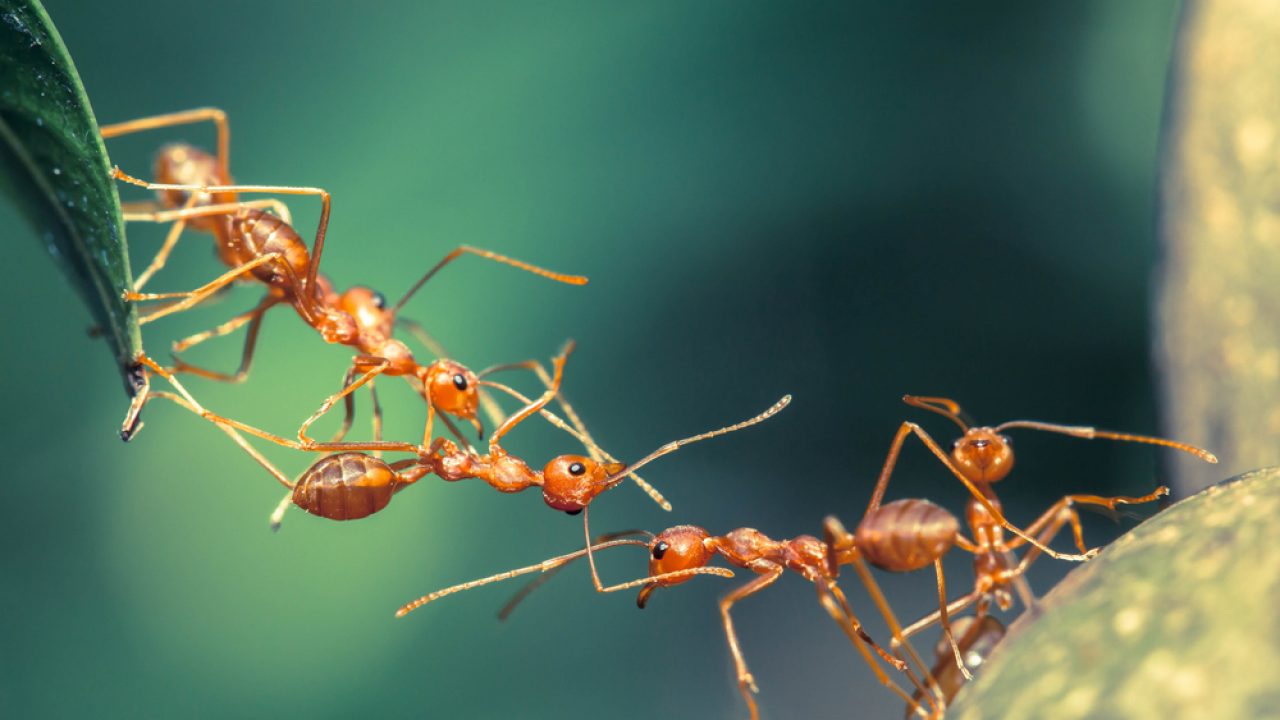Home>Gardening News and Trends>Latest News>How Strong Are Insects
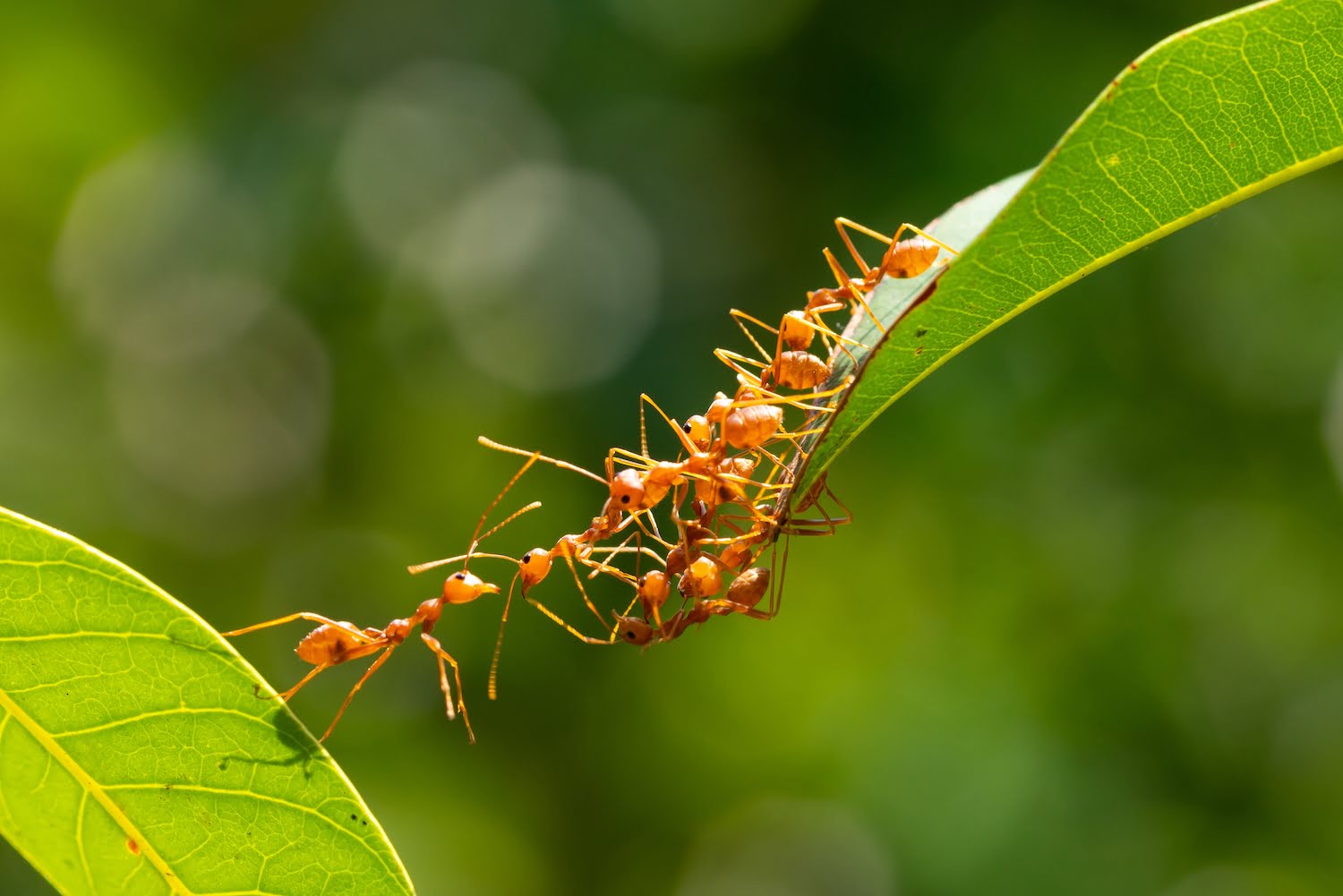

Latest News
How Strong Are Insects
Modified: January 22, 2024
Discover the Latest News on How Strong Insects Really Are! Explore fascinating studies and surprising facts about the incredible strength and abilities of these tiny creatures.
(Many of the links in this article redirect to a specific reviewed product. Your purchase of these products through affiliate links helps to generate commission for Chicagolandgardening.com, at no extra cost. Learn more)
Table of Contents
Introduction
From tiny ants to powerful beetles, insects have always fascinated us with their ability to withstand incredible forces and perform astonishing feats. Despite their small size, these creatures possess remarkable physical strength that is often disproportionate to their body size. Understanding the strength and capabilities of insects is not only fascinating from a scientific perspective but also offers valuable insights into the natural world.
Insects are the most diverse group of organisms on Earth, with over a million identified species and many more yet to be discovered. This vast diversity is matched by the wide range of physical adaptations that insects have developed, including their impressive strength. While humans may excel in activities such as weightlifting and endurance sports, insects excel in their own unique ways.
By studying the strength of insects, scientists can gain a deeper understanding of the principles of biomechanics and the limits of physical forces. Additionally, it can provide inspiration for the design and development of new materials, robotics, and technologies. Insect strength can be harnessed for practical applications, from engineering techniques to improve structural stability to creating more efficient machines.
This article delves into the world of insect strength, exploring the anatomy of insects, their physical capabilities, and the incredible feats they can perform. We will also discuss the benefits of insect strength and the challenges researchers face when studying these remarkable creatures. Prepare to be amazed by the impressive and often surprising strength of insects and how it has shaped their lives and our understanding of the natural world.
Anatomy of Insects
In order to understand the immense strength of insects, it is crucial to examine their unique anatomy. The physical structures and adaptations of insects allow them to perform extraordinary feats, despite their small size.
At the core of an insect’s strength is its exoskeleton—a hard, external covering that provides both protection and support. Unlike the internal skeletons of vertebrates, an insect’s exoskeleton is composed of a tough substance called chitin. This exoskeleton serves as a rigid frame that anchors the muscles and allows for powerful movements.
In addition to the exoskeleton, insects have a highly specialized musculature system. Their muscles are attached to the inner surface of the exoskeleton, providing leverage for their movements. Some insects have evolved unique structures known as “resilin,” an elastic protein that stores and releases energy during locomotion, enabling rapid and forceful movements.
Furthermore, insects have adapted their body shape and structure to maximize their strength. Many species have evolved strong and robust legs, equipped with spines, hooks, and claws that allow them to grip and hold onto surfaces. These adaptations enable insects to navigate various environments, from climbing vertical surfaces to maneuvering through dense vegetation.
The structure of an insect’s wings is also worth noting in the context of its strength. While delicate in appearance, insect wings are incredibly strong and flexible. They are composed of a thin membrane supported by a network of veins, which provide both stability and flexibility during flight. The wings of insects like dragonflies and beetles have evolved to withstand high speeds and rapid maneuvers, demonstrating the remarkable strength of these organs.
Overall, the anatomy of insects is a testament to their ability to overcome physical challenges and exert extraordinary strength. Their exoskeletons, musculature, specialized structures, and wing adaptations work in harmony to enable impressive locomotion and feats of strength.
Physical Strength of Insects
Despite their small size, insects possess astonishing physical strength that allows them to perform remarkable feats. Their strength is often proportional to their body size, enabling them to overcome significant obstacles and challenges in their environment.
In terms of sheer force, insects can exert remarkable pressure with their jaws. Ants, for example, are known for their ability to carry objects many times their own body weight. Leafcutter ants, in particular, can carry leaf fragments that are several times their size and weight, thanks to their powerful jaws and strong mandibles.
In addition to their jaw strength, certain insects have incredible leg strength. Some species of grasshoppers, for instance, can launch themselves into the air with explosive force, using their hind legs as powerful jumping mechanisms. These remarkable leaps allow them to evade predators and cover long distances efficiently.
Furthermore, insects such as beetles and rhinoceros beetles are known for their exceptional ability to push or move objects much larger and heavier than themselves. They can use their strong legs and robust body structures to roll dung balls or move obstacles out of their path.
The strength of insects is also evident in their ability to generate speed. Take the example of the fastest insect on Earth, the tiger beetle, which can sprint at incredible speeds of up to 5.6 miles per hour (9 kilometers per hour). This impressive velocity allows the beetle to chase down its prey or escape from predators with lightning-fast agility.
Moreover, when it comes to endurance, insects are capable of incredible feats. Some species of migratory butterflies, such as the monarch butterfly, undertake long-distance journeys spanning thousands of miles, enduring harsh weather conditions and navigating across challenging terrains. These endurance flights require a remarkable amount of strength and stamina.
Ultimately, the physical strength of insects is not only remarkable in itself but is also a testament to their remarkable adaptation to their environment. Their ability to exert force, jump, carry, push, and sustain speeds and long distances showcases the incredible capabilities of these small yet mighty creatures.
Insect Locomotion
Insects have evolved a variety of locomotion techniques that enable them to navigate their environments with precision and efficiency. Their diverse strategies for movement are a testament to their adaptability and physical prowess.
One of the most common forms of insect locomotion is walking or crawling. Insects use their legs, equipped with specialized structures like hooks and claws, to grip onto surfaces and propel themselves forward. Some insects, like beetles and ants, have even evolved adhesive pads on their feet that allow them to walk on vertical or even inverted surfaces.
Another remarkable mode of insect locomotion is jumping. Grasshoppers, fleas, and some beetles can use their hind legs to generate powerful jumps. These legs are equipped with strong muscles that can store and release energy rapidly, propelling the insect into the air with astonishing force. This jumping technique allows insects to escape predators or move quickly between plants.
Flight is another incredible form of locomotion among insects. The ability to fly has allowed insects to become the most abundant and diverse group of animals on Earth. Insects have evolved wings that enable them to achieve controlled flight, a feat accomplished by a unique combination of wing movements and adjustments. From the agile flight of bees and dragonflies to the graceful hovering of butterflies, insect flight showcases their remarkable strength, agility, and adaptability.
Swimming is yet another mode of locomotion employed by some aquatic insects. Mosquito larvae, for example, use undulating movements to swim through water. They can also generate propulsion by beating their specialized appendages, known as paddles or gills.
It is important to note that each form of locomotion in insects is intricately connected to their anatomy and physical abilities. The powerful muscles, jointed limbs, specialized structures, and wing adaptations all contribute to the extraordinary locomotor capabilities exhibited by these creatures.
Insect locomotion is not only fascinating from a scientific standpoint but also holds practical implications. The study of insect movement has inspired advancements in robotics and biomimicry. Engineers have looked to insects for inspiration in creating agile and efficient robots capable of walking, jumping, flying, and swimming. By studying insect locomotion, researchers unlock nature’s secrets and find innovative solutions to real-world challenges.
Incredible Feats of Insect Strength
Insects are known for their incredible feats of strength, often defying our expectations of what their small bodies are capable of. These remarkable demonstrations of strength highlight the remarkable adaptations and physical capabilities of these tiny creatures.
Leafcutter ants, for instance, are renowned for their ability to carry leaf fragments that are many times their own weight. These industrious ants work together in highly organized teams to cut and transport leaves back to their colonies. Their strength and coordination allow them to efficiently carry out these tasks, even in the face of obstacles.
Another extraordinary example is the Hercules beetle, which possesses one of the strongest bite forces of any creature relative to its body size. With its distinctive large horns, this beetle is capable of lifting and moving objects over 850 times its own weight. This incredible strength is utilized during battles with rival males and to overcome physical barriers in its environment.
In the world of jumping insects, the flea takes the crown for its remarkable ability to jump heights many times its body length. Thanks to the specialized structure of its hind legs and the rapid contraction of its muscles, a flea can achieve vertical jumps of up to 150 times its own body height. This astonishing feat of strength allows fleas to evade predators and reach hosts for blood meals.
Another insect known for its extraordinary strength is the stag beetle. Male stag beetles possess large, curved jaws called mandibles that they use during battles for territory and mates. These mandibles can exert immense force, enabling them to overpower opponents and demonstrate their dominance.
The strength of insects is not limited to land-dwelling species. Some aquatic insects, like the water strider, can support their weight on the surface tension of water. This seemingly impossible feat is due to specialized adaptations on the insect’s legs, enabling it to distribute its weight effectively and avoid breaking the water surface.
Among flying insects, the dragonfly stands out for its exceptional aerial prowess. Dragonflies are agile and swift hunters, capable of capturing prey with astonishing precision mid-flight. Their rapid and precise movements demonstrate the strength and control necessary to perform complex maneuvers in the air.
These are just a few examples of the incredible feats of strength exhibited by insects. It is truly astounding to witness the power and adaptations of these small creatures, which enable them to overcome physical challenges and thrive in their environments.
Benefits of Insect Strength
The immense strength displayed by insects holds numerous benefits, both from a scientific perspective and in practical applications. Understanding and harnessing their strength can lead to advancements in various fields and provide valuable insights into the natural world.
From a scientific standpoint, studying insect strength provides insights into the principles of biomechanics and the limits of physical forces. By examining how insects are capable of such remarkable feats, researchers can gain a deeper understanding of the relationship between form and function. This knowledge can be applied to fields such as robotics, engineering, and materials science, leading to the development of stronger and more efficient structures, materials, and technologies inspired by nature’s designs.
Furthermore, the strength of insects has significant implications for ecological and evolutionary studies. It plays a vital role in the survival and reproductive success of these organisms, impacting their interactions with the environment and other species. Understanding the strength and physical capabilities of insects can shed light on their ecological roles, their ability to exploit resources, and the adaptations that have shaped their evolution.
Practically, studying insect strength can have numerous applications. Engineers and designers can draw inspiration from insect locomotion and structural adaptations to create innovative solutions. For example, the strength and efficiency of ants’ cooperative behavior can inform strategies for optimizing logistics and resource allocation in human societies. Additionally, insights from insect strength can contribute to the development of bio-inspired robotics and biomimetic materials that mimic the performance and resilience of insects.
Another significant benefit of harnessing insect strength lies in the field of agriculture. Insects like bees and butterflies, with their remarkable flight capabilities, are essential pollinators for many crops. By understanding and preserving their strength and abilities, we can contribute to the sustainability and productivity of agricultural systems, ensuring food security and ecological balance.
Moreover, exploring the strength and physical abilities of insects provides a sense of wonder and appreciation for the intricate workings of the natural world. It reminds us of the incredible diversity and adaptations that exist all around us, inviting curiosity and exploration.
Overall, the benefits of understanding and harnessing insect strength are vast, ranging from scientific discoveries to practical applications. By unlocking the secrets of their remarkable abilities, we can innovate and improve various aspects of our lives while deepening our understanding of the natural world.
Challenges in Studying Insect Strength
While the strength of insects is undoubtedly fascinating, studying and unraveling the secrets of their physical capabilities comes with its own set of challenges. These challenges stem from the small size, complexity, and unique adaptations of insects, as well as the limitations of current research techniques and tools.
One major obstacle in studying insect strength is the difficulty in accurately measuring and quantifying their forces. Insects are small in size, and their movements occur on a microscale, making it challenging to develop techniques and instruments that can precisely measure their forces. Additionally, capturing and analyzing the movements of insects in real-time can be complex, requiring specialized equipment and high-speed cameras capable of capturing rapid movements.
Another challenge lies in understanding the underlying biomechanics and structures that enable insect strength. Insects possess intricate internal and external structures, such as their exoskeletons and muscle systems, which are difficult to observe and study in detail. Obtaining precise data on the forces exerted by these structures and how they interact requires advanced imaging techniques and invasive procedures that may disrupt the natural behavior of the insects.
The diversity of insects poses another challenge. With millions of insect species, each with its unique adaptations and strength capabilities, it is impossible to study every species individually. Researchers must select certain representative species or groups for their studies, which may not fully capture the breadth of insect strength across different taxa.
Furthermore, ethical considerations and regulations often come into play when conducting research on insects. The need to ensure humane treatment, adhering to animal welfare guidelines, and obtaining research permits can present obstacles in studying insect strength. These considerations can limit the types of experiments that can be conducted or require researchers to explore alternative methods of data collection.
Lastly, the ephemeral nature of many insect species presents challenges in conducting long-term studies on their strength. Some insect species may have short lifespans or limited availability, requiring researchers to capture data within a narrow time frame. This time constraint can make it difficult to gather comprehensive data on a particular species or observe long-term strength changes.
Despite these challenges, researchers continue to devise innovative methods and technologies to overcome these limitations. Advancements in imaging techniques, miniaturized sensors, and other research tools hold promise in enabling a deeper understanding of insect strength and its applications in various fields.
Overall, studying the strength of insects presents unique challenges due to their small size, complex adaptations, and diversity. Overcoming these challenges requires interdisciplinary collaboration and the development of specialized techniques that can accurately measure and analyze the remarkable physical capabilities of these incredible creatures.
Conclusion
The strength displayed by insects is a testament to the incredible adaptability and resilience of these small creatures. Their physical abilities, from carrying objects many times their own weight to performing astonishing jumps and flights, never cease to amaze us. Understanding insect strength not only provides insights into the principles of biomechanics and the limits of physical forces but also inspires advancements in various fields.
From a scientific perspective, studying insect strength deepens our understanding of the intricate relationship between form and function in the natural world. It offers valuable insights into the evolution and ecological roles of insects, shaping our knowledge of their behavior and adaptations. Additionally, the study of insect strength has practical applications in fields such as robotics, materials science, and engineering, where nature’s designs can be mimicked to create more efficient and resilient technologies.
However, studying insect strength is not without its challenges. The small size of insects, their complex anatomy, and the limitations of research techniques pose obstacles in accurately measuring and quantifying their forces. Ethical considerations, species diversity, and the ephemeral nature of certain species further complicate the study of insect strength. Nevertheless, researchers are continuously pushing the boundaries and developing innovative methods to overcome these challenges.
In conclusion, the world of insect strength is a fascinating realm filled with remarkable adaptations and astonishing capabilities. These small yet mighty creatures have demonstrated their ability to overcome physical challenges and thrive in their environments. By studying and harnessing their strength, we can unlock nature’s secrets, gain insights into the principles of biomechanics, and find inspiration for technological advancements. Exploring insect strength not only offers practical benefits but also instills a sense of wonder and appreciation for the awe-inspiring diversity and adaptability of the natural world.

